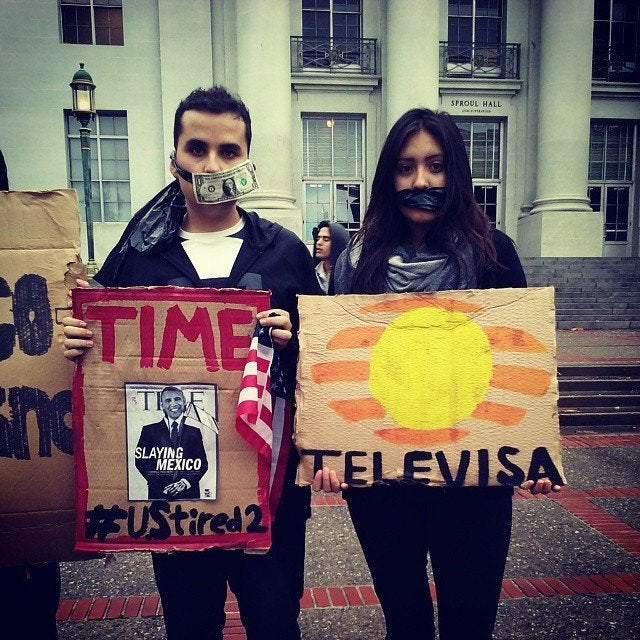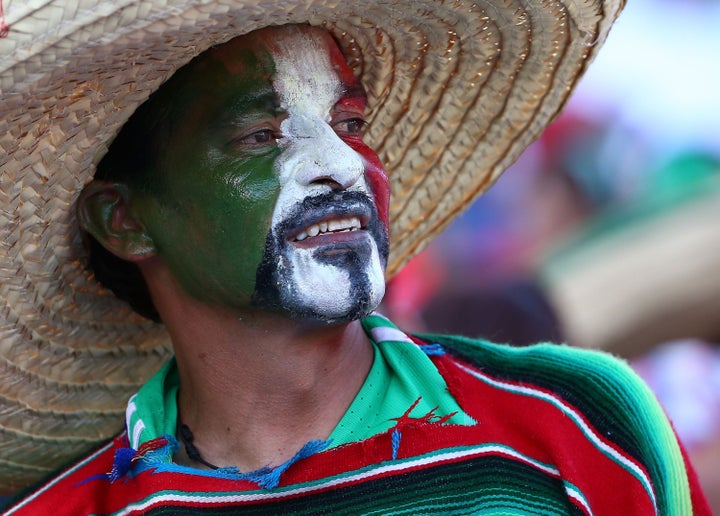
PASADENA, California —“This is your land ... But it is my home,” Mexican soccer player Miguel Layún tweeted Saturday night.
It was an exclamation point on a 3-2 Mexico victory over the United States in an epic soccer match at Pasadena’s Rose Bowl -- a game that will go down as one of the most memorable in the historic rivalry between the two countries.
In many ways it felt like a Mexican home game.
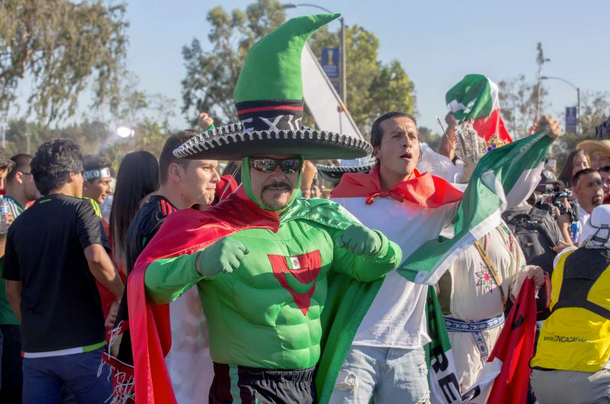
“This is an extension of Mexico,” I overheard one U.S. fan say as he looked around and noticed his team’s fans were clearly outnumbered by those dressed in green jerseys.
Both teams and their respective fans gave an electrifying performance, one that echoed heritage, politics, and other issues between the United States and Mexico.
It was impossible to miss the symbolism. Prior to the match a “border fence” separating the two countries’ tailgate parties held a sign informing Mexican fans: “This Area Is For U.S. Fans Only.” Many Mexican fans attempted to cross the U.S. fan zone fence line, and some even got pushy with security.
Mexican and U.S. fans congregated at the fence to taunt each other. “I believe that we will win! I believe that we will win!” sang those covered in American flag paraphernalia. The chants were peppered with occasional slurs like beaners or pinches gringos, but it was mostly good-natured. No one was shot, arrested or deported.
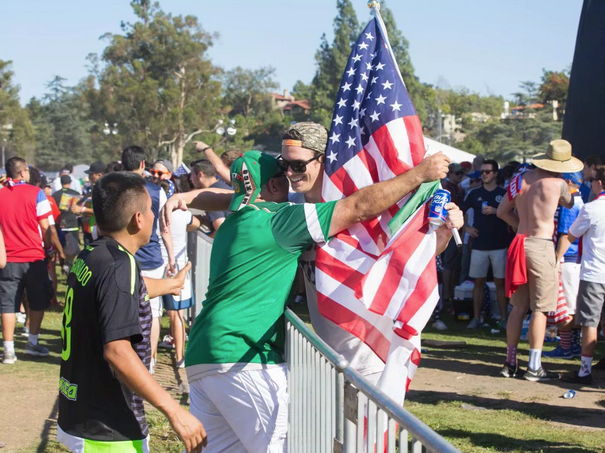
Overall the scene at the U.S.- Mexico tailgate border fence was mostly one of camaraderie.
The politics of soccer, it turns out, are much more unifying than the politics of politics. It even brought Captain America together with an Aztec warrior for a photo and a handshake.

It was also a border that celebrated bicultural folklore, while mocking characters that have come to symbolize intolerance. Republican presidential hopeful Donald Trump was present in the form of signs, piñatas, helmets and masks.

It was also a chance for U.S. fans to challenge Mexicans on their own “hateful” language.
“I have proud Mexican roots but what bothers me about these games, is people who come here claiming Donald Trump is this devil and then use the same bigoted language by screaming puto,” U.S. fan Baltazar Rodriguez, who was born in Los Angeles but whose parents are from Mexico City, told Fusion.
Mexican fans are known worldwide for screaming puto -- a slur for homosexual -- at other fans and players. The time-old issue caused some controversy during last year’s World Cup.
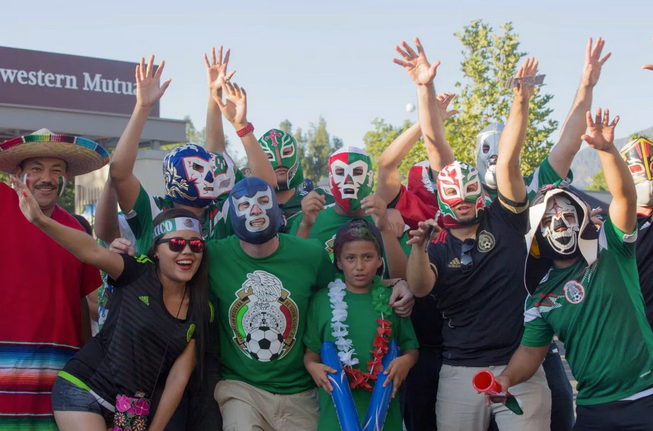
Mexican fans say screaming puto is more like saying “coward” or someones who le faltan huevos -- lacks balls.
“That’s why I root for the U.S., guey,” Baltazar says in Spanglish. “Because my patria accepts individuality. I’m not from here or from there, but which country accepts those who are neither from here or there? This one.”
Some Mexican fans came to the game with a much more serious message.
“We come here to support the 43 missing students,” says Mario Alberto Alvarez, who held a sign accusing the Mexican and U.S. governments of turning a blind eye to the drug war violence ravishing Mexico. “We came to raise awareness for this cause not to watch the Mexican national soccer team play.”

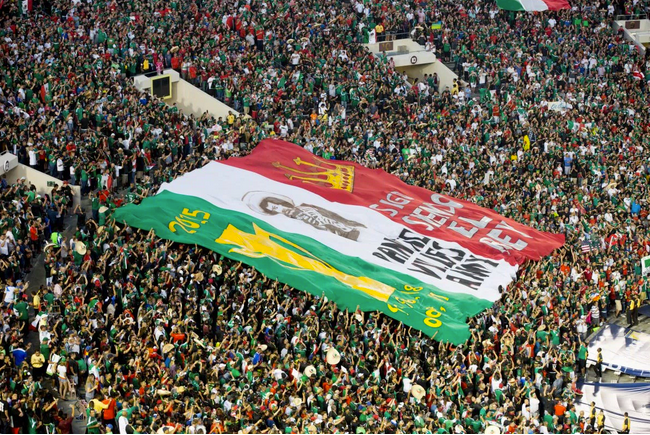
Inside the stadium, there was more striking imagery; from the Mexican fans rolling out a massive flag featuring Pancho Villa, the popular Mexican revolutionary who once invaded the United States, to smoke bombs that covered the Rose Bowl in a green and red haze.
After the match, the politics continued via memes and Gifs making the rounds on social media, mocking Trump and outspoken U.S. soccer star Landon Donovan.
But at the Rose Bowl it all seemed to have been left on the field, as the ecstatic Mexican fans and the long-faced U.S. fans exited the stadium and walked together into a parking lot that had just dismantled a border fence that wasn’t needed.
Also on WorldPost:

